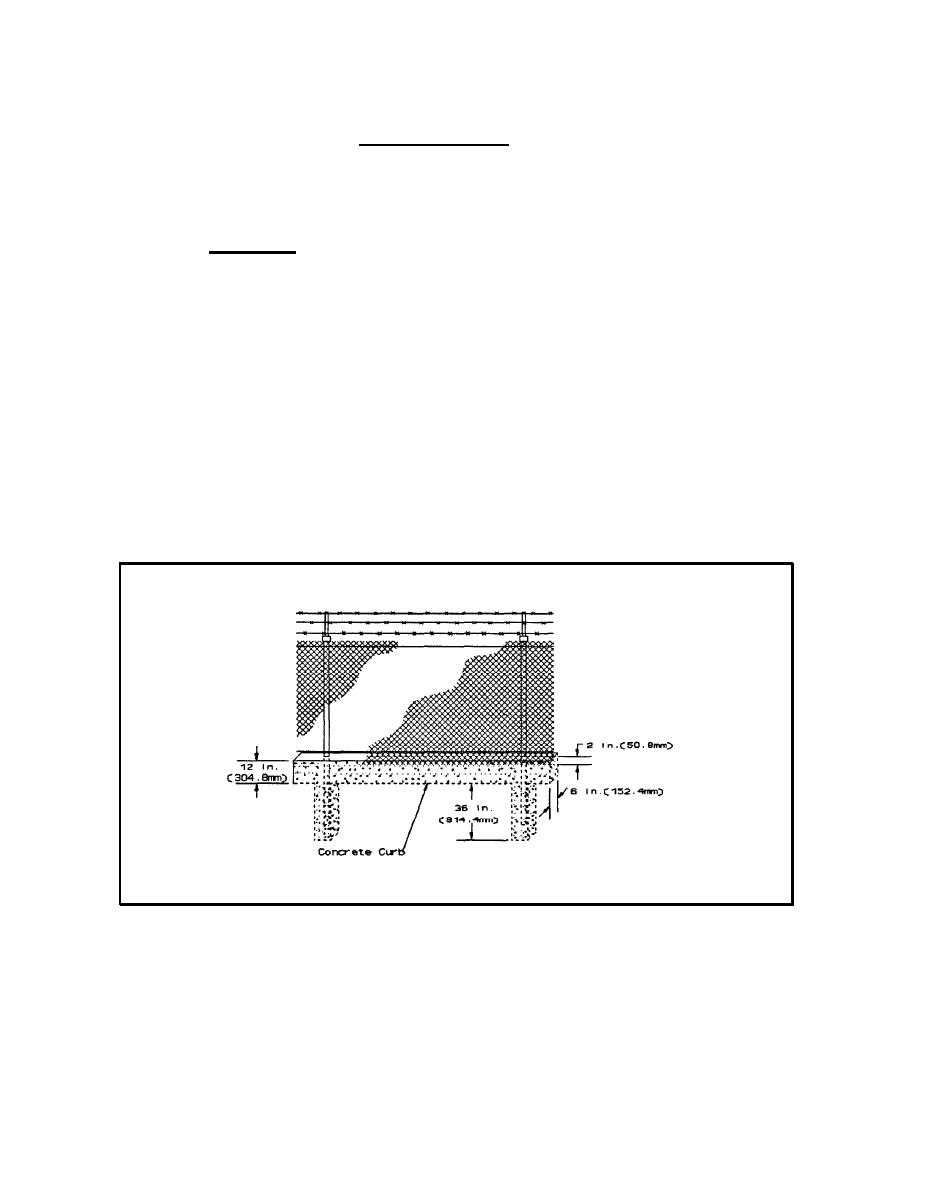

Custom Search
|
|

|
||
 MIL-HDBK-1013/10
MIL-HDBK-1005/3, Drainage Systems, provides considerable
information concerning design criteria and planning guidelines for drainage
systems. While this guidance should be utilized to design drainage for the
restricted area, the designer must assure the security aspects of the design
take precedence over the drainage guidance contained in the MIL-HDBK.
2.3.6.6
Tunneling. A soils engineering analysis should be made where soft
or shifting soil, such as sand, is encountered. Since the penetration
resistance of a security fence approaches 15 seconds, the year-round soil
condition at the facility must also provide 15 seconds as a minimum of
tunneling resistance. Where the soil analysis indicates tunneling can be
accomplished in less than 15 seconds, the fence will be embedded in a
continuous concrete curb. The recommended depth of the curb will be
determined from the soil analysis and the frost line at the facility.
Since the entire fence line at nuclear sites is embedded in a
continuous concrete curb, as shown in Figure 9, tunneling should be prevented
except in the most severe cases of shifting sand. At nuclear sites with very
sandy terrain, a soils engineering analysis should also be made to determine
the recommended depth of the concrete curb. When specifying the depth of the
concrete curb and concrete embedded fence poles, the designer should also
consider the frost-line for the subject area to assure that heaving of the
posts and curb cannot occur during the winter.
Figure 9.
Chain-Link Fence Embedded in Concrete Sill.
17
|
 |
|
 |
||